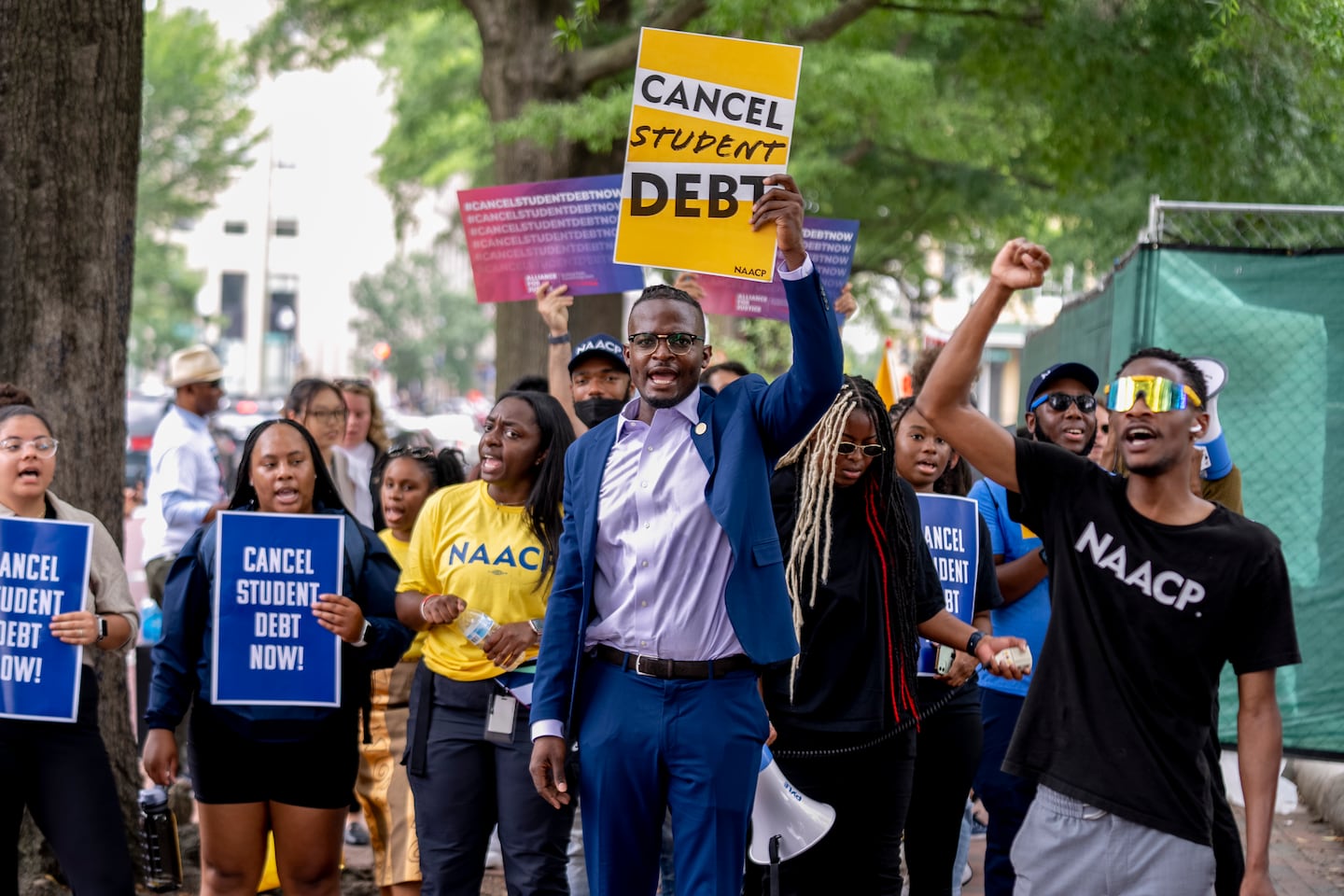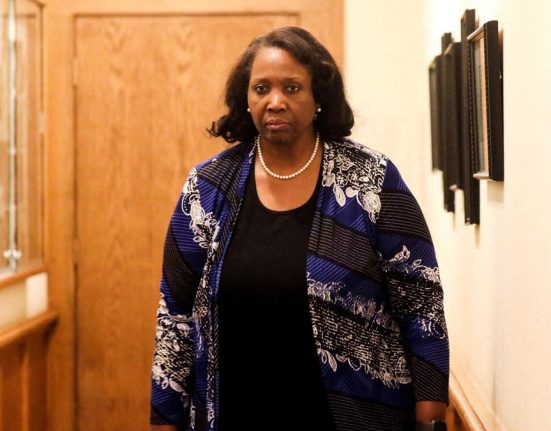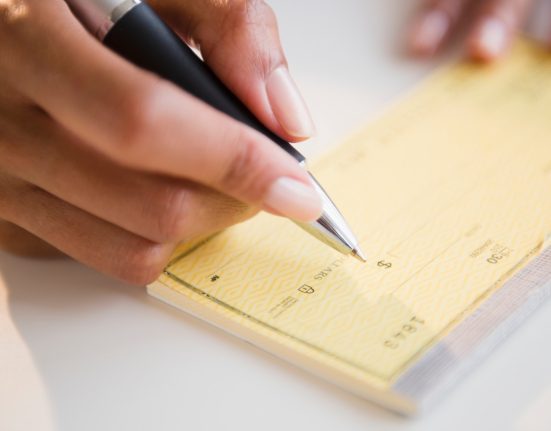Republicans, however, challenged Biden’s assertion of executive authority over the loan program and won a 2023 Supreme Court ruling that vastly scaled back debt forgiveness.
Now, under the Trump-backed budget bill pending before the Senate, the loan program would be simplified and its terms made less generous to borrowers. (The House already passed the bill last month.) The bill would basically turn back the clock on the Biden administration’s efforts to make college loans more affordable for a broader range of people.
Here’s what borrowers and would-be borrowers should know.
What would the Republican plan do to the student loan program?
It would cut an estimated $330 billion in government spending over 10 years, according to backers of the budget bill, by, among other steps, curtailing or eliminating Biden-era repayment programs that granted loan forgiveness or lower payments to certain categories of people, including those in relatively lower-income jobs.
The bill would impose new loan amount limits, simplify repayment options, and make colleges partially responsible for student defaults on loans. The net effect would make federal student loans more expensive.
Why is student loan debt a political issue?
It has become a hotly contested issue concerning issues of fairness, personal responsibility, and what’s best for the economy.
What’s the basic position of the Republican Party on student loans?
The GOP says it is unfair to forgive the debts of some after so many have already paid off their loans. Some conservatives find it particularly inappropriate when some of the people getting some measure of forgiveness have benefited from at least a partial college education. They say forgiven or defaulted loans come at the expense of all taxpayers, including working-class taxpayers who never went to college. Many Republicans also say the loan program under Biden allowed colleges to sidestep responsibility for the rapidly increasing costs of college.
How are Republicans framing the issue?
Education Secretary Linda McMahon recently said, under the Trump-backed budget plan, “American taxpayers will no longer be forced to serve as collateral for irresponsible student loan policies.”

What’s the basic position of the Democratic Party on student loans?
Democrats say more favorable terms and student loan forgiveness will stimulate the economy by redirecting spending on loan payments to spending on houses, automobiles, and consumer products, while also enhancing social justice and addressing systemic failures in the higher education system. Senator Elizabeth Warren has called student debt a crisis “that’s holding back our economy and crushing millions of American families.” Warren says families are “being squeezed by an economy that forces them to take on more debt to cling to their place in America’s middle class.”
How extensive is the debt?
Outstanding education debt in the United States now stands well over $1.6 trillion. (The entire annual federal budget is about $7 trillion.) Nearly 43 million people — one in six adult Americans — carry student loans. Women and people of color are most burdened by debt, research shows.
What’s the history of the loan program?
It was passed during the Cold War after the Soviet launch of the satellite Sputnik as a bipartisan initiative intended to boost science and engineering. President Dwight D. Eisenhower, a Republican, signed it into law. The program was substantially expanded as part of President Lyndon B. Johnson’s Great Society domestic agenda by providing scholarships, low-interest loans, and work-study programs for a much wider range of students. (Johnson was a Democrat.)
How does the basic program work?
The federal government, through the Department of Education, loans money to eligible students and charges interest on it. The loans are unsecured (there’s no collateral, as there is on a mortgage and car loan) and credit history does not affect eligibility or interest rates. Students and their families apply for loans by submitting a form known as FAFSA (Free Application for Federal Student Aid), which contains information about a family’s finances to help determine the amount of loans a student is qualified for.
What’s the interest rate on federal student loans?
Right now, 6.53 percent for undergraduate education and 8.08 percent for graduate and professional education. (Most federal student loans also have loan fees.) The Department of Education hires loan servicing companies, including MOHELA, Aidvantage, and Nelnet, to service the loans.
Do private banks make college loans?
Yes, but they are credit-based, meaning interest rates and repayment options are based on the borrower’s creditworthiness (a cosigner may be required). Private loans generally have higher interest rates and do not offer income-based repayment plans or forgiveness programs. Right now, less than 10 percent of all student loans are from private lenders. Some critics of the Trump administration plan say it will drive more borrowers to private lenders.
A Pell Grant is federal financial aid awarded to eligible low-income students to help pay for college. Pell Grants are not loans and the money doesn’t need to be repaid. The Student Borrower Protection Center, a nonprofit focused on eliminating student debt, says the proposed overhaul in the budget bill would disqualify many borrowers who now receive Pell Grants.
How many student loans go into default?
Before the pandemic-related repayment pause, the default rates hovered around 11 percent. Last month, for the first time since the pandemic first hit, the federal government under Trump began taking steps to collect on defaulted loans, saying it will dock the tax returns of anyone who owes money, among other steps. Around 5.3 million borrowers are currently in default, with another 4 million borrowers in late-stage delinquency (91 to 180 days late).
How did the Biden administration change the program?
In 2022, the Biden administration announced a plan to forgive up to $20,000 for Pell Grant recipients and $10,000 for other federal student loan borrowers, subject to income thresholds. But the Supreme Court struck it down as unconstitutional. As a result, the Biden administration developed a variety of income-driven repayment plans, such as the SAVE Plan (Saving on a Valuable Education), that offered lower monthly payments, especially for undergraduate borrowers, and provided an earlier path to forgiveness for those with low balances.

The income-driven repayment plans adjusted monthly payments based on a borrower’s income and family size, and capped payment as low as 10 percent of discretionary income and loan forgiveness after as little as 20 years of qualifying payments. The Biden administration also worked to improve existing programs like Public Service Loan Forgiveness, which forgives the remaining balance on federal student loans after 120 qualifying payments for those working in public service.
How successful was Biden in forgiving loans?
Biden managed to forgive a little more than 10 percent of the student debt it targeted.
What has the Trump administration done so far?
In addition to its new collections efforts, the Trump administration, which has vowed to abolish the Department of Education, ordered the student loan portfolio moved under the Small Business Administration.
How would the legislative overhaul affect repayment?
The pending budget bill, if enacted, would give borrowers two options for repaying their loans, through a plan with fixed payments or via an income-driven repayment plan. Loan forgiveness in some cases would come after 30 years, compared with the current 25 years. The bill would make it more difficult for borrowers to temporarily have their loan payments deferred due to unemployment or economic hardship and establish new limits on forbearance.
The bill would also change the formula to limit how much the federal government will loan to students and their families. And loans would be calculated based on the median cost of all similar college programs, rather than the cost to attend the specific school the student is attending. That means students attending higher-priced schools would receive less money.
Got a problem? Send your consumer issue to sean.murphy@globe.com. Follow him @spmurphyboston.







